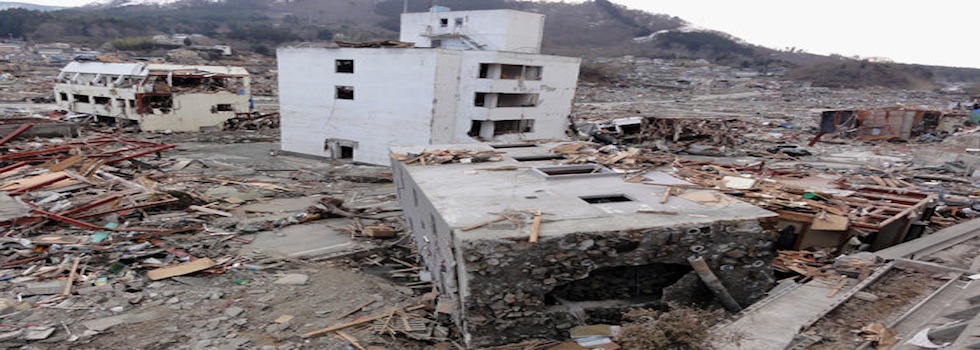
March 11, 2013
Japan's experience is a clear reminder to the world of the value of mainstreaming disaster preparedness and risk management into development.
It was 2:46 p.m. when one of the largest earthquakes ever recorded struck off the Pacific coast of Japan on March 11, exactly two years ago. The shaking lasted six endless minutes, generating a devastating tsunami that took countless lives and livelihoods. Two years later, the tragic images are still fresh in our minds.
As one of the most geologically violent areas in the world, Japan has a centuries-long tradition of disaster risk management. That tradition saved lives and prevented damage and today serves as a tangible reminder to the world of the value of mainstreaming disaster preparedness and risk management into development, particularly in vulnerable regions.

Near Sendai, agriculture and other businesses are recovering along with the communities. The economic losses from the disaster have been estimated at $210 billion.
Critical decisions need to be taken in the immediate aftermath of a disaster, but the decisions and actions that make the difference are the ones that come long before: the decisions to invest in disaster risk management, to design infrastructure that can withstand earthquakes, to strengthen early warning systems.
“If we don’t invest in resilience, we simply can’t afford to continue to develop the way that we do," said World Bank Vice President for Sustainable Development Rachel Kyte.
High cost of disasters
While the Japanese experience is a reminder that no country – rich or poor - is immune from the impacts of disasters, the statistics tell us that poor and vulnerable countries are the ones that suffer the most.
The last few years have seen the highest disaster losses ever recorded, continuing a trend that has seen economic costs continuously grow. Since 1980, the economic costs of disasters in developing countries amounted to $1.2 trillion – about a third of all official development aid. Over that same period, low-income countries have accounted for only 9 percent of the total number of disasters, but 48 percent of the fatalities. Climate change is increasing the risk.
Looking ahead, as countries and cities in the developing world grow at record pace – and with them, so does exposure to disasters – there is a unique window of opportunity to invest in resilience and achieve a sustainable growth path.
Mainstreaming disaster risk management
Following a commitment made at the Sendai Dialogue, a meeting of global leaders held in 2012 near the epicenter of the earthquake, the World Bank is stepping up its disaster risk management programs to support developing countries as they strive to be more resilient to natural hazards.

The World Bank and Government of Japan have launched a knowledge-sharing project to help countries vulnerable to disasters learn from Japan's risk management and reconstruction experience.
Resilience to disasters is becoming a core element in the World Bank’s design of development programs, with over two-thirds of the Bank’s Country Partnership Strategies now including disaster risk considerations. Between 2006 and 2011, the Bank financed 113 disaster prevention and preparedness operations (US$7.9 billion) and 68 disaster reconstruction operations (US$3.8 billion), amounting to just over 5.3% of its overall portfolio.
Because not all risk can be mitigated, the World Bank also supports countries as they develop their capacity to cope with the impact of disasters, particularly by building their financial resilience. For example, through a partnership with the government of Japan, the Secretariat of the Pacific Community, the Asian Development Bank, and the Global Facility for Disaster Reduction and Recovery (GFDRR), the World Bank recently established the Pacific Catastrophe Risk Assessment and Financing Initiative. With its partners, the World Bank created a database of over 2 million assets potentially at risk from natural hazards in the East Asia and Pacific region. Drawing on this information, and with the support of the International Development Association, which is the World Bank’s fund for the poorest, and the Government of Japan, countries in the Pacific have gained access to catastrophe risk insurance.
On the global stage, the World Bank is shaping the international policy dialogue on resilience through platforms such as the Sendai Dialogue and the G20. With its partners in the Global Facility for Disaster Reduction and Recovery (GFDRR), the World Bank helps mobilize the development community to invest in building resilience as an essential element of sustainable development.
RELATED RESOURCES
- Learning from Megadisasters: Knowledge Notes from Japan
- Learning from Megadisasters: Animation
- Infographic: Mainstreaming Disaster Risk Management
- TEDxSendai: On Natural Disasters
- Sendai Dialogue Resilience Stories
- Sendai Report: Managing Disaster Risks for a Resilient Future
Photos: The photos on this page are courtesy of みちのく震録伝 Michinoku Shinrokuden, a participatory archival project of the International Research Institute of Disaster Science (IRIDeS) of Tohoku University. The project aims to collect and record knowledge and memories from the 2011 Great East Japan Earthquake and Tsunami so lessons learned from the disaster can inform future disaster risk management measures. Content courtesy of the World Bank.
